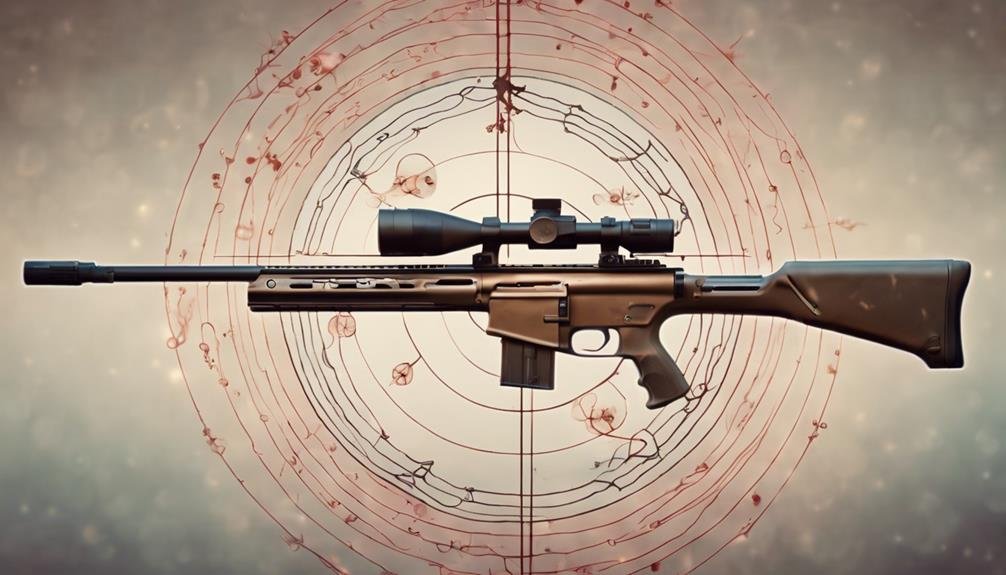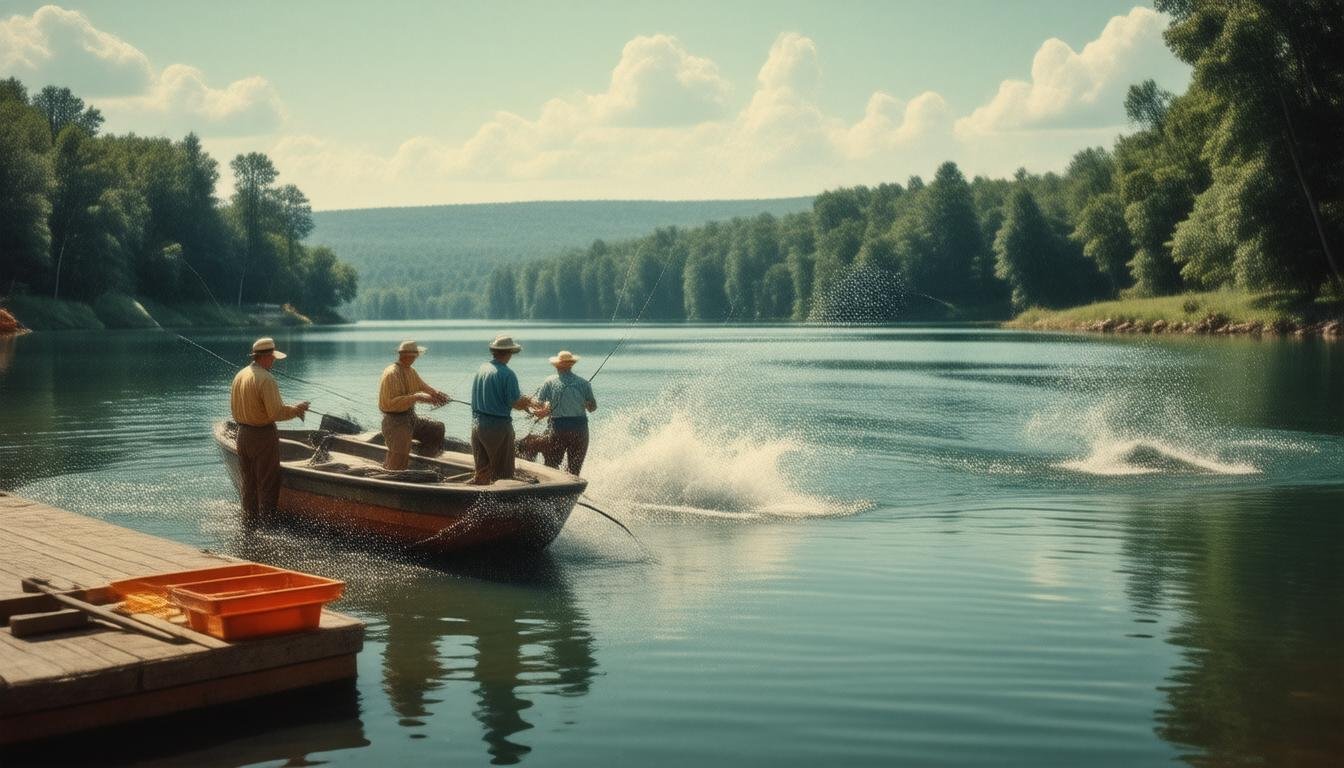Accurate shot placement is essential for a quick and humane kill. Understanding the fundamentals of shot placement, including the broadside shot and aiming behind the crease of the shoulder, is imperative. Anchoring techniques, which target the heart, lungs, and skeletal system, guarantee a successful harvest. Considering the animal's position and making angle compensation adjustments is necessary. Different species require tailored shot placement strategies, taking into account unique anatomical characteristics. By mastering the art of anchoring and precision killing, hunters can secure a swift and humane kill, and exploring the nuances of shot placement can lead to a more refined and efficient hunting experience.
Key Takeaways
- Understanding anatomy is crucial for effective shot placement, enabling hunters to target the heart and lungs for a quick and humane kill.
- Aiming behind the crease of the shoulder increases the chances of a quick kill, as the bullet travels through both lungs.
- Bullet calibration is vital, as it facilitates correct penetration and expansion for a lethal wound.
- Anchoring techniques, such as breaking the shoulder and disrupting the spine and nervous system, guarantee a successful and efficient harvest.
- Considering the animal's position and adjusting aim accordingly is essential for precise shot placement and a quick, humane kill.
Shot Placement Fundamentals
Understanding the fundamental principles of shot placement is essential for a quick and humane kill, as it allows hunters to target the critical organs that guarantee a rapid and ethical harvest. The broadside shot offers the best opportunity for a quick kill, as the bullet can travel through both lungs, resulting in a fatal wound channel. Aiming behind the crease of the shoulder results in the bullet traveling through both lungs, increasing the chances of a quick kill. Bullet calibration is vital in this regard, as it facilitates the correct penetration and expansion for a lethal wound. Effective shot placement requires a thorough understanding of anatomy, allowing hunters to target the heart and lungs, the primary organs responsible for a quick and humane kill, thereby guaranteeing a rapid and ethical harvest.
Anchoring the Animal Effectively
In situations where a quick and controlled harvest is paramount, anchoring the animal through precise shot placement becomes essential, particularly in alpine environments or when hunting on small parcels of land. When hunting in alpine terrain, it's vital to drop the animal in its tracks to prevent it from tumbling or escaping. Anchoring the animal effectively requires aiming square in the center of the shoulder, which breaks the shoulder, disrupts the spine and nervous system, and travels into both lungs. This approach is particularly useful when hunting bears, which do not bleed well. Bullet selection also plays a vital role, as high-quality ammunition is necessary to facilitate a quick and humane kill. By mastering anchoring techniques, hunters can guarantee a successful and efficient harvest.
Considering the Animal's Position
When the animal is positioned at an angle, shot placement must be adjusted to guarantee a quick and humane kill, as quartering shots can jeopardize one of the shoulders. Angle Compensation is essential in these situations, as it aligns the bullet's trajectory with the animal's Body Orientation. To achieve accurate shot placement, hunters must consider the animal's position and adjust their aim accordingly. This may involve aiming slightly forward or rearward to compensate for the angle, ensuring the bullet passes through critical organs. By understanding the animal's position and making the necessary adjustments, hunters can increase their chances of a quick and humane kill.
Species-Specific Shot Placement
Different species exhibit unique anatomical characteristics, necessitating tailored shot placement strategies to facilitate a quick and humane kill. Understanding the specific vulnerabilities of each species is essential for a successful hunt.
| Species | Unique Anatomical Characteristics |
|---|---|
| Bear | Forward-positioned heart and lungs, necessitating adjusted shot placement |
| Elk | Large bones and muscles require careful shot placement and high-quality ammunition |
| Antelope | Precise shot placement is necessary to avoid meat loss |
| Deer | Traditional broadside shots are effective, but careful consideration of anatomy is still necessary |
| Moose | Large size and robust bones require adjusted shot placement and hard-hitting rifles
Mastering the Art of Anchoring
Mastering the art of anchoring requires a deep understanding of the anatomy and physiology of the targeted species, as well as a precision-oriented approach to shot placement, particularly in situations where a quick and humane kill is paramount. Anchoring involves placing a shot that simultaneously disrupts the animal's essential organs and skeletal system, guaranteeing a rapid and ethical harvest. This approach is essential in alpine situations or when hunting on small parcels of land, where minimizing tracking distance is paramount. Body positioning plays a pivotal role in anchoring, as it allows the hunter to align the shot for maximum effect. By targeting the shoulder, spine, and essential organs, the hunter can guarantee a swift and humane kill, while also minimizing meat loss.
Hunting Situations and Strategies
In various hunting scenarios, the ability to adapt shot placement strategies is essential for achieving a quick and humane harvest. Hunting pressure, for instance, can affect an animal's behavior, making it more challenging to secure a clean shot. Understanding the terrain effects on animal movement and behavior is vital in adjusting shot placement. In dense or rugged terrain, hunters may need to adjust their strategy to compensate for reduced visibility or increased difficulty in tracking. Effective shot placement in these situations requires a deep understanding of the interplay between hunting pressure, terrain effects, and animal behavior. By adapting to these variables, hunters can increase their chances of a successful and ethical harvest.
Adjusting for Animal Movement
When an animal is in motion, the hunter must factor in the direction and speed of movement to accurately adjust shot placement and guarantee a quick and humane harvest. Understanding tracking patterns and momentum shifts is vital in this process. By analyzing the animal's movement, the hunter can predict its trajectory and adjust the shot accordingly. This is particularly important when hunting species that exhibit sudden momentum shifts, such as deer or antelope. By factoring in the animal's movement, the hunter can guarantee a precise shot, taking into account the direction and speed of the target. This precision is essential for a quick and humane harvest, and a successful hunt.
Achieving a Quick and Humane Kill
Accurate shot placement is critical to achieving a quick and humane kill, as it guarantees a rapid incapacitation of the animal and minimizes suffering. As responsible hunters, we have a moral obligation to facilitate a swift and painless death, upholding the principles of hunting ethics. This not only respects the animal's life but also reflects our commitment to fair chase and sportsmanship.
- Aiming for crucial organs, such as the heart and lungs, ensures a rapid kill and minimizes suffering.
- Broadside shots offer the best opportunity for a quick kill, as the bullet can travel through both lungs.
- Anchoring the animal, especially in alpine situations or on small parcels of land, may be necessary to prevent escape or tumbling.
- Understanding anatomy and adjusting shot placement is key to a successful and humane hunt.
- By mastering shot placement, we fulfill our moral obligations as hunters, upholding the principles of fair chase and respect for the animal's life.
Frequently Asked Questions
What Is the Minimum Caliber Required for Hunting Large Game Animals?
When selecting a caliber for large game animals, consider bullet selection and caliber comparison. A minimum of .30 caliber with a 180-grain bullet is recommended, but .338 or .375 calibers may be necessary for larger species, ensuring sufficient kinetic energy and penetration.
How Do I Determine the Correct Shooting Distance for My Rifle?
To determine the correct shooting distance for your rifle, consult ballistic tables and calibrate your optic to verify accurate ranging, accounting for factors like muzzle velocity, bullet drop, and atmospheric conditions.
Can I Use the Same Shot Placement for Different Species of Deer?
Did you know that 70% of deer hunters prioritize shot placement over rifle accuracy? When it comes to deer anatomy, species variations necessitate adapted shot placement strategies, as white-tailed deer, for instance, have a more forward-positioned heart compared to mule deer.
What Is the Best Way to Practice Shot Placement Without Actually Hunting?
To practice shot placement without actual hunting, utilize target simulation exercises and dry fire drills, focusing on precise shot alignment and trigger control to develop muscle memory and improve marksmanship skills.
How Do I Compensate for Wind Resistance When Taking a Long Shot?
"As the bullet pierces the air, wind resistance whispers its presence, subtly shifting trajectory. To compensate, employ wind deflection calculations and consider Ballistic Compensators, ensuring precision in the face of turbulent air, and a swift, humane harvest."
Conclusion
Mastering shot placement is essential for hunters to achieve a quick and humane kill. A thorough understanding of the target species' anatomy and adjusting shot placement accordingly is paramount. For instance, when hunting white-tailed deer, a shot placed at the intersection of the neck and shoulder guarantees a swift kill, as demonstrated in a study conducted by the Quality Deer Management Association, which reported a 95% success rate in achieving a fatal wound with this shot placement.









